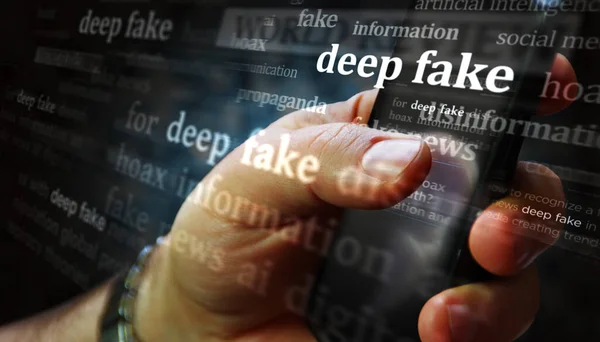Have you ever watched a video of a world leader spitting incredible bars and thought, ‘wow, there’s no way this is real’? Well, in the majority of cases, you would be correct. World leaders seldom spit incredible bars, and what you witnessed was likely a deepfake, or synthetic media. It can be easy to spot a deepfake when it’s so clearly parody, but a steady increase in their quality has made identifying these snippets of artificial media more challenging when the outlandish context is removed. A deepfake depicting a world leader giving a stately address, for instance, may not inspire the same level of scepticism as a clip of them launching into rap, no matter how absurd the content may be. With deepfake tools becoming better and more widely available, discerning these synthetic videos is becoming a crucial digital literacy skill. Fortunately, there are certain tells to help you distinguish the AI-generated from the authentic, and know the real from the (deep) fake.
Firstly, what are deepfakes? Deepfake – a portmanteau of “deep learning” and, well, fake – refers to photos and videos created entirely through software. Powered by the machine learning techniques behind large language models like ChatGPT, and the same facial recognition technology that brought you Snapchat filters, deepfakes can manipulate existing visuals and audio to create new media depicting something that never really happened. Deepfakes have been floating around the internet for a number of years, but it is only more recently that rapid developments in AI have facilitated more effective deepfake generation, and consequently, more pervasive deepfakes. Remember Pope Francis rocking a papal white puffer? Or Taylor Swift peddling a range of Le Crueset cookware? Both synthetic deepfakes, credible enough to send internet circles into a spin. While these examples are mostly harmless, there is concern that these increasingly convincing deepfakes could be weaponised for more nefarious purposes. Already, deepfakes have been deployed to propagate misinformation, create pornographic materials without consent, and fool unsuspecting victims with sophisticated scams.
The good news is that these deepfakes are good, but they’re not quite perfect. Alongside some savvy media literacy practices and a healthy dose of scepticism, these five tips can help you keep things real online.
Facial Details
The devil is in the details. Deepfakes tend to fall down when it comes to the details of human faces, particularly around the eyes and mouth. When dealing with video content, take a look at the subject’s eyes. Are their eyes moving in an unusual pattern? Or indeed, not moving at all? The pattern of a subject’s blinking can often be telling. If a subject is blinking too much – or conversely, not blinking at all – it’s a sign that it could be a deepfake. Mouth movements can be similarly challenging to replicate, and as such, any blurring in or around the mouth can also suggest the footage is doctored.
A Lack of Emotion
It sounds obvious, but deepfakes haven’t yet mastered the art of human emotion. Oftentimes, the audio accompanying a video can be a giveaway. Is the range of emotion conveyed through the audio appropriate? Does it align with natural speaking patterns? Take a look at the facial expressions. Are they matching the implied emotion? Is the expression itself natural, or is it contorted in any way? Do the eyes match? If the eyes are truly the window to the soul, deepfake windows are boarded up. There’s a soullessness to the eyes that helps distinguish a more emotionally-reserved clip from an AI-generated creation. If the speaker you’re watching seems less bored and more like a total void of emotion, you could have a deepfake on your hands.
Misplaced shadows
Whether it’s video footage or a still image, misplaced shadows are one of the clearest signs of a deepfake. Are all the shadows where they should be? Deepfakes can find shadows around eyes particularly difficult to master – even more so if the subject is moving. Is the lighting adjusting as you might expect, and the shadows moving accordingly? It may take some practice to learn to spot these inconsistencies, but if you spend enough time looking for varying lighting, unusual discoloration, and misplaced shadows, you’ll be able to identify deepfakes in no time.
Too perfect hair or teeth
Deepfake, or just a brand new set of veneers? Most people don’t have the perfect pearly whites that AI technologies tend to replicate. If the hair looks a little too perfect, the hairline a little too refined, or there’s an astonishing lack of flyaway hairs, it’s less likely to be down to good genes and hairspray, and more likely to be a deepfake. Unnatural hair texture or facial hair particularly smooth in appearance are further indicators of AI-generated content.
Lip sync errors
Brush up on your lip-reading, because one of the biggest challenges for deepfakes is effectively lip syncing. Lip and mouth movement is notoriously tricky to replicate. Ask yourself if the movements are accurate of natural human movements, and consistent with the tone and accent. Look for any slight discrepancies between audio and mouth movement – one instance of poor timing and the whole jig is up.






